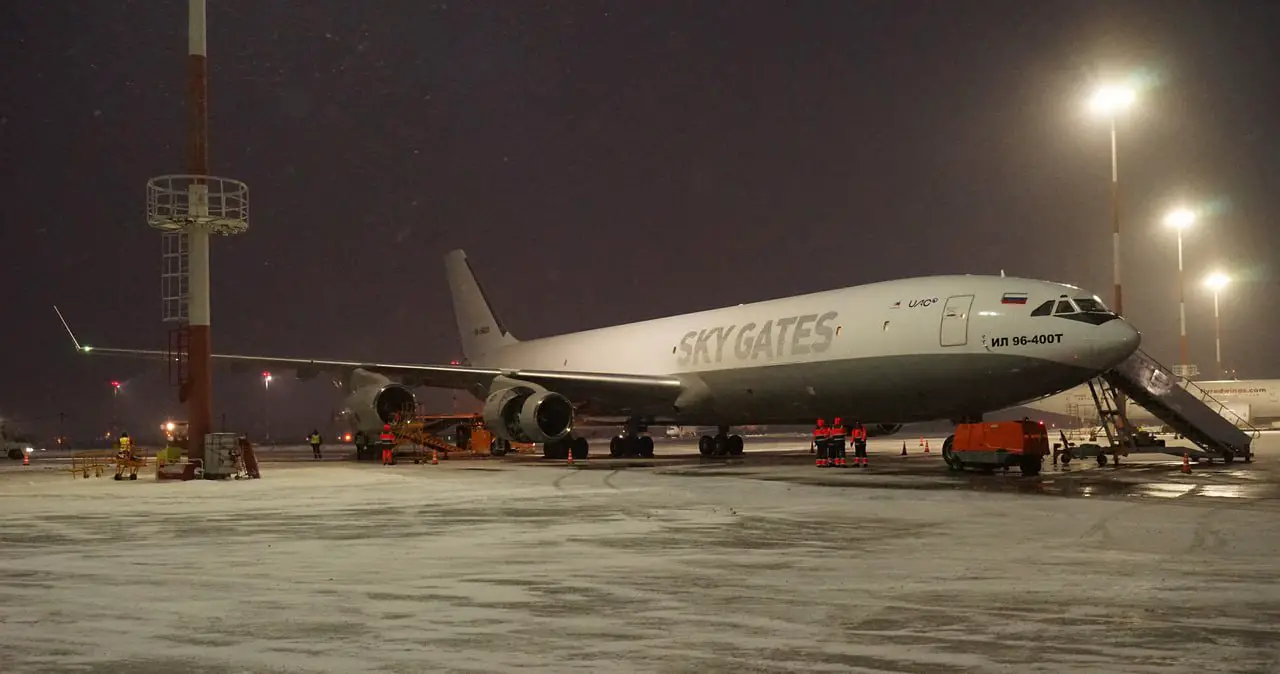Since 2022, the Russian aviation industry has encountered unprecedented challenges. However, a striking contrast has emerged between the passenger and cargo segments, with passenger airlines demonstrating remarkable resilience in comparison to their cargo counterparts. The different strategies of these sectors and potential local solutions to the cargo aircraft shortage are the focus of this comprehensive analysis, which reveals a complex landscape of challenges and adaptations.
For a variety of compelling factors, Russian passenger airlines have exhibited a higher degree of adaptability to the new operating environment. The government’s prompt intervention provided essential support using financial assistance and regulatory modifications. The Ministry of Transport instituted new maintenance regulations and certification procedures to enable the continued operation of foreign-made aircraft in Russia’s domestic market. Passenger carriers have been able to preserve operational continuity as a result of this regulatory flexibility.
As a result of the scarcity of international travel alternatives, passenger carriers such as Aeroflot and S7 Airlines have successfully shifted their focus to domestic routes, where demand has remained robust. In certain sectors, such as tourism routes to destinations such as Sochi and regional business centers, the domestic passenger market has even experienced growth. Their survival and relative stability have been significantly impacted by this capacity to redirect. Despite the existence of maintenance challenges, notably for newer generation aircraft such as S7’s A320neos with Pratt & Whitney engines, airlines have devised inventive solutions. For example, S7 Technics expanded its maintenance capabilities to accommodate numerous Airbus and Boeing models; however, certain specialized components continue to be difficult to maintain. Only the manufacturer currently services the PW1100G engine.
Comparatively, cargo airlines face more severe operational constraints. Volga-Dnepr Group, Russia’s largest cargo airline group, vividly illustrates these challenges. The company has significantly reduced its international operations, which were previously its main source of revenue. The detention of one of their An-124s in Canada has significantly impacted their heavy cargo capacity, and their Boeing 747-8F fleet remains largely grounded. Their emphasis on international cargo operations has made them especially vulnerable, as the Russian domestic market struggles to absorb the previously deployed capacity, particularly for specialized cargo aircraft like the An-124 Ruslan.
In response to these challenges, the United Aircraft Corporation has expedited the conversion of passenger Tu-204s and Tu-214s into freighter configurations. These aircraft are well-suited for medium-haul cargo operations, as they have payload capacities of 25–30 tons. The conversion program comprises modern cargo handling systems, updated avionics packages, sizable cargo doors, and reinforced floor structures. This domestic solution is a substantial stride toward resolving the cargo aircraft shortage.
The Russian aviation industry has also prioritized the development of new cargo aircraft variants. The Russian aviation industry has restarted the Il-96-400T program to provide high-capacity cargo capabilities. This widebody freighter is compatible with standard cargo containers, featuring a payload capacity of 92 tons and a range of up to 5,000 kilometers when completely loaded. Moreover, the Aviastar facility in Ulyanovsk continues to manufacture the Il-76MD-90A. This aircraft boasts a modern PS-90A-76 engine for enhanced efficiency, digital flight deck systems, and conformance with current noise regulations. The aircraft now has a payload capacity of 60 tons.
Russia has made substantial investments in cargo-handling infrastructure to support these aircraft programs. Modern cargo terminals at major airports, new maintenance facilities specifically designed for cargo aircraft, and the implementation of digital cargo tracking systems enhance the capabilities of the cargo sector. The operation of cargo aircraft manufactured domestically and the preservation of efficient logistics networks within Russia are contingent upon these infrastructure enhancements.
The enhanced market adaptability of passenger airlines accounts for their superior performance. They could promptly redirect capacity to domestic routes, maintain a greater degree of flexibility in route planning and scheduling, and modify pricing strategies to suit the domestic market. It has been essential that they have received government support, which includes a favorable regulatory environment for domestic operations and priority in maintenance support and spare parts. Additionally, passenger carriers have effectively established alternative revenue streams by employing cargo-in-cabin operations during peak demand, charter and special flight operations, and auxiliary services.
The Russian aviation industry’s future seems to be characterized by different paths for cargo and passenger operations. Passenger airlines are expected to maintain their relative stability by continuing to prioritize domestic markets and receive government assistance. Despite facing a more challenging path, the cargo sector shows potential due to domestic aircraft development initiatives and infrastructure enhancements. The industry’s capacity to surmount technological obstacles and adhere to international standards with aircraft manufactured domestically will significantly influence the success of these initiatives.
The development of domestic cargo aircraft solutions is not merely a response to current challenges; it is a strategic transition toward increased aviation independence. While necessity compelled this transformation, it has the potential to significantly alter the structure and capabilities of the Russian aviation industry in the long term. Although the timeline for attaining full operational capability remains uncertain, the ongoing investments in domestic aircraft production and maintenance capabilities indicate a dedication to the development of sustainable solutions.
This comprehensive reconfiguration illustrates the adaptability and resilience of the Russian aviation sector in the face of external pressures. The cargo sector’s transformation through domestic aircraft development and infrastructure enhancement continues to evolve, whereas passenger airlines have achieved a workable equilibrium through domestic operations. The success of these initiatives will significantly influence the future structure of Russian aviation and its position in the global market.
“Now!” “Why do you think Russian cargo carriers were importing planes, when international customers have been using Russian planes for their cargo moving?” “Let us know in the comments.” Please like and share our videos and subscribe to our channel. Please also consider taking our memberships to encourage us.
Official Website of Youtube Channel – Altitude Addicts
